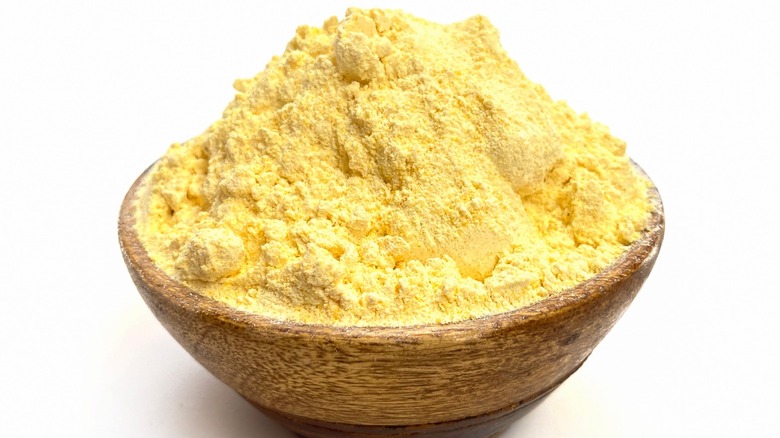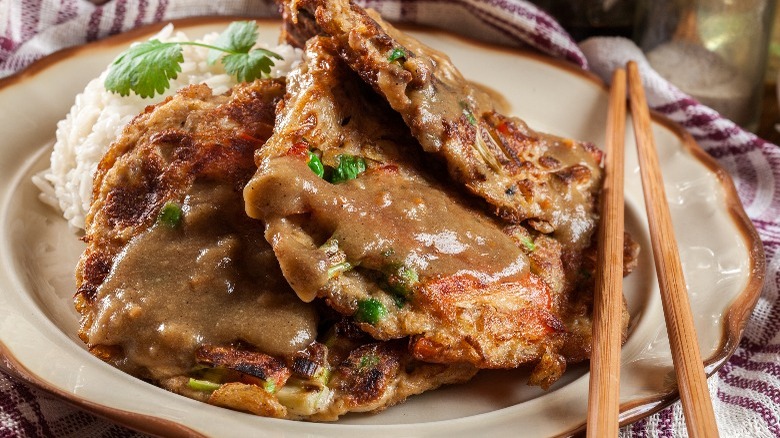The Power Of Chickpea Flour In Gravies And Soups
The chickpea's power is undeniable. Known popularly as the garbanzo bean and used in everything from salads and grilled veggie dishes, to falafels and pasta, this starchy legume can't be beaten. But what you may not be aware of are the many uses for chickpea in its flour form — including thickening sauces, soups, and gravy with ease.
There are many ways to thicken gravy and soups from your standard roux to a chunk of beurre manié, as well as the bevy of starches available to aid you in binding and stabilizing an emulsion; however, chickpea flour does this all so effortlessly and offers plenty of savory toasted flavor.
In fact, similar to peanut butter powder, chickpea flour can be used as a thickening agent while boosting protein and overall nutrition — but it still has a toasty taste that is milder than the nuttier option. When compared to other starches like tapioca or arrowroot powder, you don't have to worry about this ingredient becoming stringy or sticky as it thickens either.
How to use chickpea flour as a thickener
While some starches require special handling instructions or the making of a slurry before adding to your sauces, finely ground chickpea flour does not. In fact, you can use it just as you would flour, directly in fat or butter to create a roux for your gravy, stew, or soup. And bonus, you don't have to wait as you do with wheat flour for the browning of that flour to receive those deeply nutty flavor notes, as they are already naturally present in chickpea flour.
Even easier you can simply whisk the sifted chickpea flour directly into the pan of sauce, gravy, or soup and watch as it blends seamlessly, thickening as it goes. It should leave you with a creamy, buttery umami result that adds dimension without overpowering the taste of your recipe — from turkey and chicken gravy to creamy butternut squash soup, beef stew, and even egg foo young. For savory flavor and ease of use, you truly can't go wrong with the power of chickpeas on your side.

